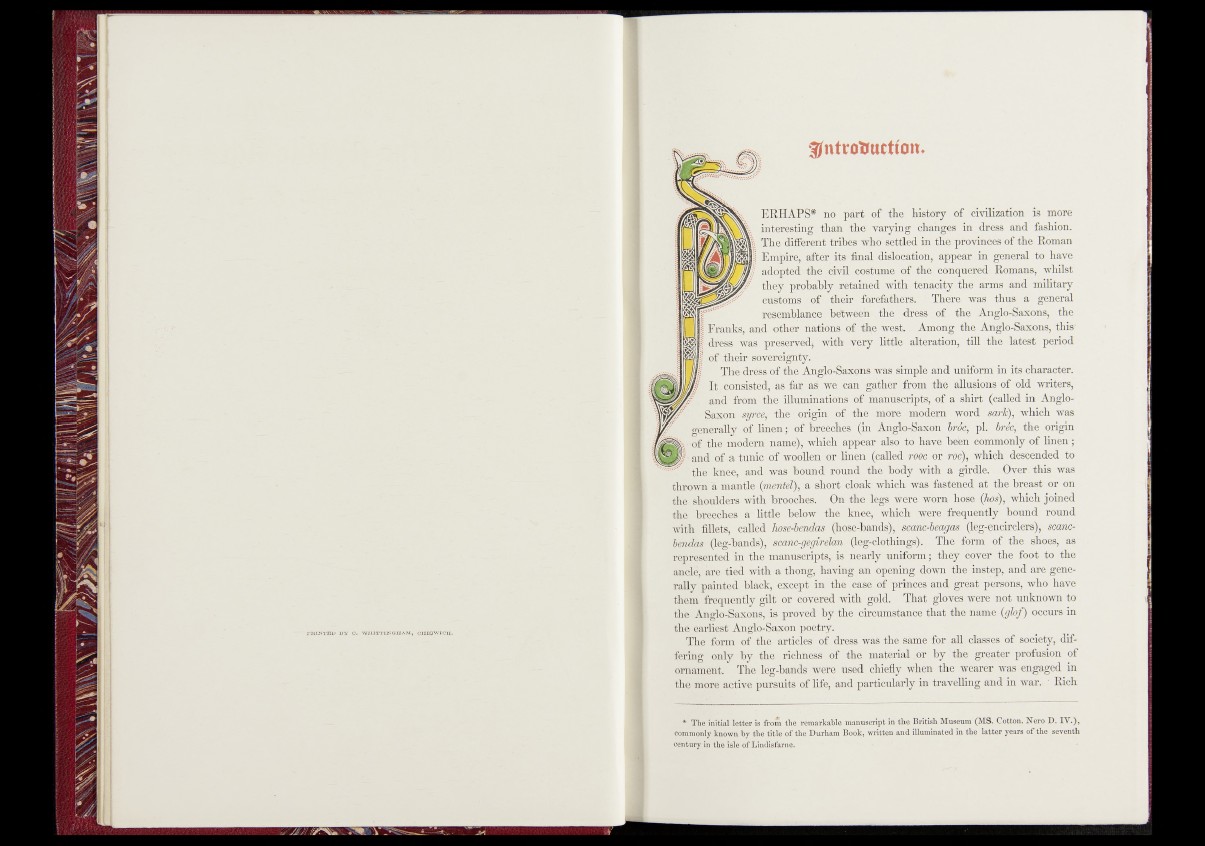
g n t r o B u t t i o i t
j p i j lAPS* npb.ipaft- ol^t|^hi.-coiy of civilization is more
in dress and fashion.
‘„The ?fl ri'\| ^ inces of the Roman
J:jn|j|n'P5¥t}^i^ fui!j]''3a^^^t*hyj,‘,appear s^?general to have
Romans, whilst
they p r o l W J' l m * n’n>Jtiar f military
was thus a general
mfe ,.df -tlu* Janglo-Saxons, the
jjjihnhs, iih'(M^^^^ il'io-.rts'; of ft 1 i e t h e Anglo-Saxons, this'
dress , latest period
g j|p T lth ( ^ im a ^ a g i§ > luW iis ,-i tuple and/uniform in iM character.
I old writers,
Kgitnd to»®®^niuminadons of jiirLmr'-cript^t’a sliiYt?-'(Hljed'iii Angloword'.^
arB. which was.
^® r.d lj^ ^ im ^ ;^ d f^ l)rt u l i ^ ‘('^> *&nv,l*thc‘ origin
H H H H H h name), w’hici^appcar W&f^^(VTfiy of linpn;:
& oh. g tun ic ool k n- or Jjneri (c allod^ ^f?dT^ f > >AlH( h*<i dew ended to
^^iM^J.yutd was Round ■rouhMi7;to Over, this was
m ,t n 11 e '• (ynsntel), a -hurt c lo i- f a-tuiHlfat the breast or on
thSfepulder-, ult (lThroQchc k-.:- On Itlmaij^^ferc»; worn Iio-e (hoi), VhJpjoined
thiJEfekhes a little bfhm tin hn hsfo) <h(~ bound round,
with -hllc K Wj2b d /ho^e-hnidos ( t l m - i c ^ a n d nqlijy fitg-encirclers), scanc-
ljfnd'ris\ (TCg-bands)^ saint <j( jtrehrt (h g dorhing^j The .fopm'Vof g p shoes, as
. represented S^fhe' manuscript«^ i^'.noanly^wfiifp-Rru; rtbtjf'tAoy.er the foot bo the
ancle,farefifed thong, hawng au Opihuig flown the instep, and are'generally
painte&r blacky e±Gept;.ih’ the''c^epof ^princes and- great persons, who have
them*frequently gilt orycf^\ f k dyw ith gold. That -gloye|,‘:%tere>ndt unknown to
the Anglo-Saxofispls proved by the, cmlp-Thspifif-c; that the ri&me-tyfof) occurs in
the egfrliesjf'Anglo-Saxon ^oLtry.
The form of; fte-. articles of ..dress'was the same for^all- classes of society, differing
oMy,$$bfhe richness of-the material .o r ||y 'the grater profusion of
ornament. H e leg-bands ^\ery,iiVfdulKM} when- the wearer was-engaged in
the more active pursuits of, ldfe^: and particularlyin travelling and'in war.. ' Rich
■ , * .The initial letter is from, the^ remarkable manuscrijit in ithe Britisli Museum (MS* Cotton. Nero D. 1VV)l,
.comnSpnly known bv^tjip!ml^ j ^ ^ ^ ^urh^^lB'ppk^w^tten and illuminated in the latter years of the seventh
cefttury in the isle of Lindisfarne.